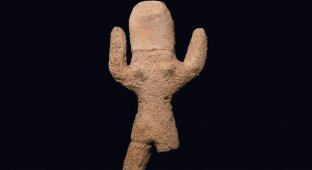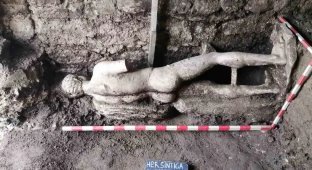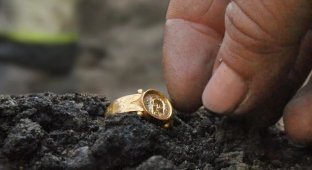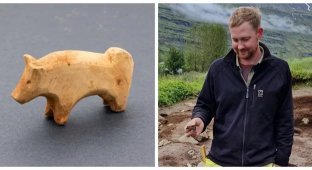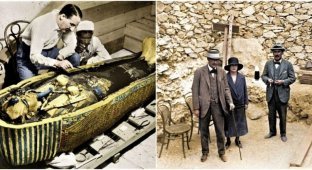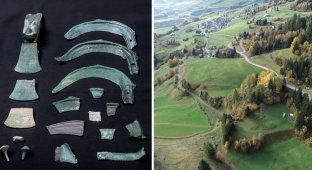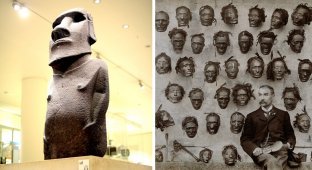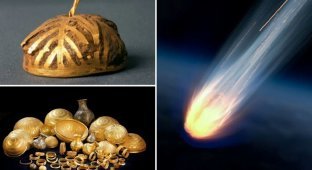Ennigaldi-Nanna: the world's first museum keeper (7 photos)
In 1925, when British archaeologist Leonard Woolley and his team were excavating the city of Ur, located in what is now the Iraqi province of Dhi Qar, they discovered a curious collection of artifacts among the ruins of a Babylonian palace. 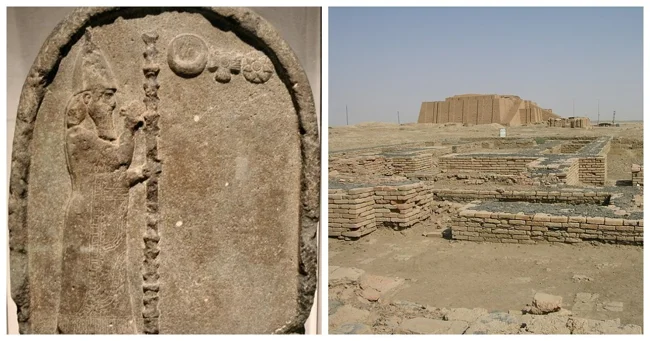
What is particularly noteworthy is the fact that these objects belonged to different geographical regions and historical periods, but were carefully collected together. What was striking was the presence of inscriptions accompanying many of these artifacts, containing detailed information about these objects. These inscriptions were written in three languages, one of which was Sumerian. Woolley determined that these artifacts were, in fact, early examples of museum exhibits, carefully collected, preserved, and painstakingly documented. The world's first museum was founded on this site, and its custodian was believed to have been a remarkable woman, the Mesopotamian princess Ennigaldi-Nanna. 
Archaeologist Leonard Woolley
Ennigaldi inherited a deep understanding of history and archaeology from her father, King Nabonidus, who ruled Babylon from 556 to 539 BCE. King Nabonidus had an exceptional passion for these areas, conducting extensive excavations and including references to previous rulers in his works. He is the very first person in history to attempt to chronologically date archaeological artefacts.
Many of the objects in the collection were discovered by him. It is possible that Ennigaldi's passion for archaeology and history was reinforced by her father's deep interest in these objects. 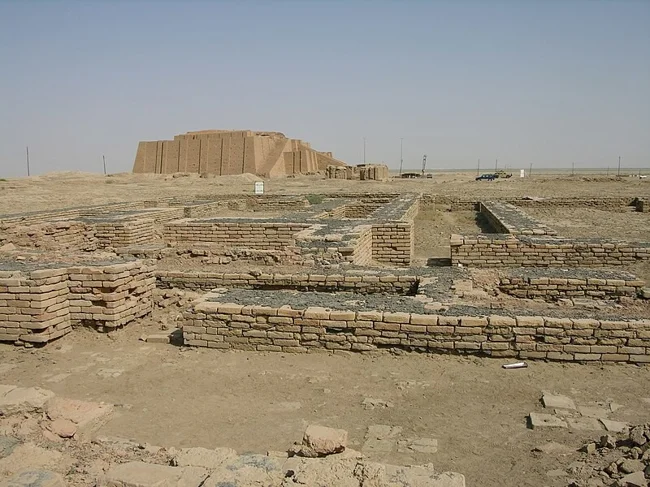
Ennigaldi Museum
In 547 B.C. Ennigaldi was appointed the high priestess of Ur, known as the Entu, a position that had remained vacant since the time of Nebuchadnezzar I in the 12th century BCE.
The Entu performed sacred duties to the moon god Sin (called Nanna in Sumerian antiquity) and held the highest ecclesiastical authority in the land. The Entu was supposedly chosen by divine intervention, with the god Sin himself choosing her through omens. 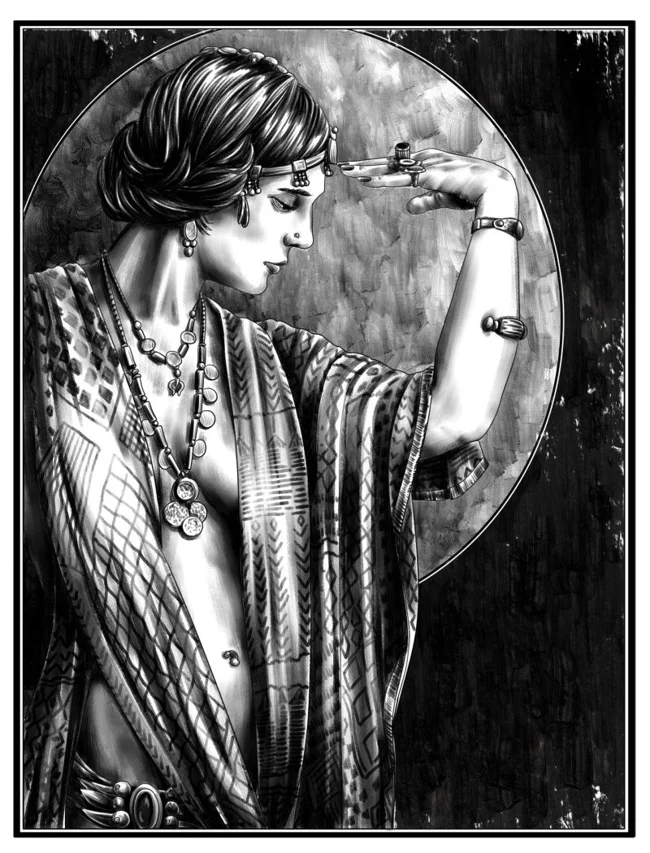
Entu through the eyes of a modern artist
It is believed that the inspiration to restore this honorary position came to Nabonidus after he interpreted a partial lunar eclipse in 554 BC as a favorable omen. In addition, the discovery of a stele depicting the dedication of Nebuchadnezzar I's daughter as an Entu further inspired him to restore the position. According to Nabonidus, the selection of his daughter as an Entu was made only after careful and extensive divination, which confirmed that she was indeed Sin's chosen candidate.
As an Entu, Ennigaldi devoted much of her religious duties to the worship of Sin, particularly during the evening hours, in a small azure chamber atop the Ziggurat of Ur. Her official residence, known as the giparu, was located nearby. Among the most important religious duties of the Entu was her role as the human wife of the god Sin and the performance of rituals associated with this sacred union, although the exact details of these rites remain shrouded in mystery. 
Reconstruction of the Ziggurat of Ur
In addition, the Entu was responsible for offering prayers for the well-being and longevity of the king, who symbolized the embodiment of Babylonia's prosperity. She also played a role in providing comfort and adornment to Ningal, the divine consort of Sin. In addition, the Entu had control over the vast holdings and wealth associated with the temple complex at Ur.
In addition to these vital duties, Ennigaldi also ran and quite possibly taught at a school for young women aspiring to become priestesses, mostly from upper-class Babylonian families. 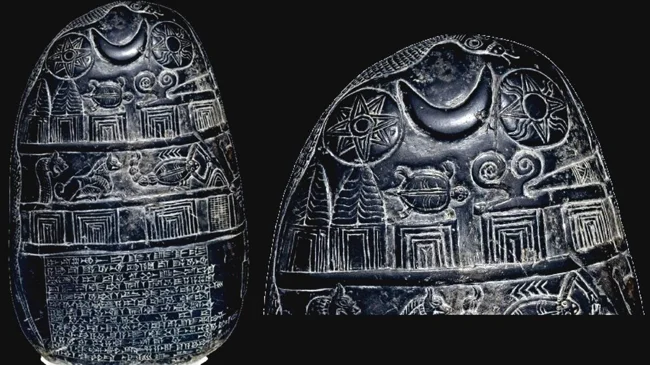
A late Kassite kudurru known as the "Misho Stone"
In 530 B.C. Ennigaldi founded a museum containing artifacts from past Mesopotamian civilizations.
Some of the items on display may have been excavated by Ennigaldi and her father. Although most of the artifacts date back to the 20th century BCE, the collection spans an enormous time span, approximately 1,500 years from 2100 BCE to 600 BCE. Ennigaldi took the initiative to create a comprehensive research program and is believed to have been responsible for cataloguing and labeling the collections herself.
The exhibits included artifacts that once belonged to Nebuchadnezzar II, including a ceremonial mace, a Kassite boundary stele (kudurru), and a carefully restored statue of Shulgi, the famous Sumerian king of Ur who reigned from 2094 to 2046 BCE, which retained its inscriptions. 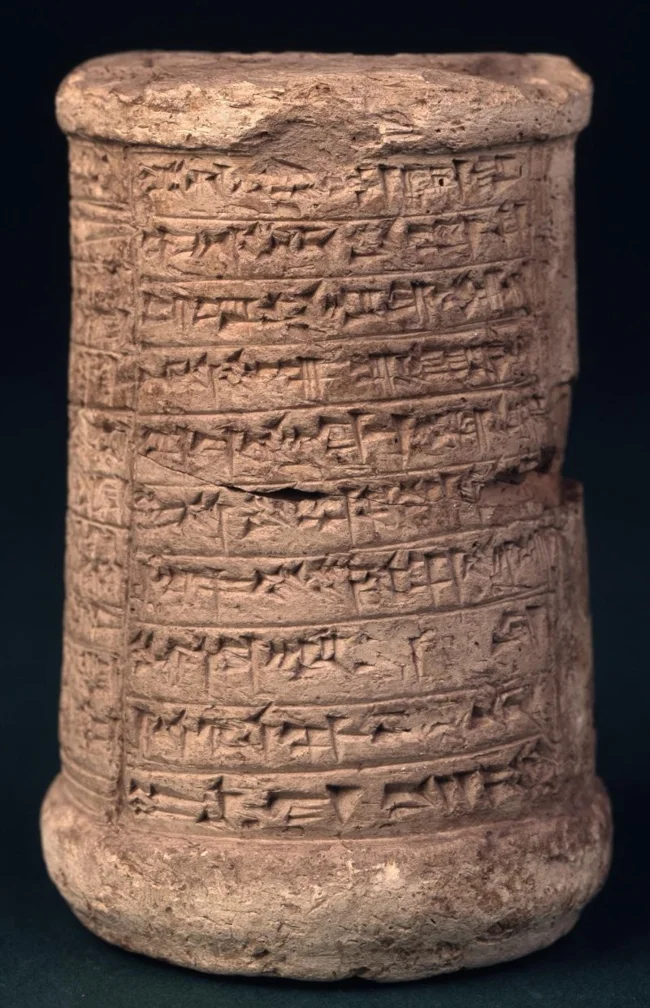
A clay cylinder with a description in three languages, which was used in the Ennigaldi Museum to accompany an ancient artifact
The museum contained numerous clay tablets and cones, each of which had descriptions of objects written in three different languages, including Sumerian. In addition, tablets with lists of exhibits were found in the museum, indicating the earliest known cases of museum catalogs.
Nothing is known about Ennigaldi's subsequent life. The museum itself ceased to exist around 500 BC. Worsening climatic conditions, including the change in the course of the Euphrates River, drought, and the retreat of the Persian Gulf, led to the rapid decline of Ur, making the city uninhabitable and it was abandoned.













